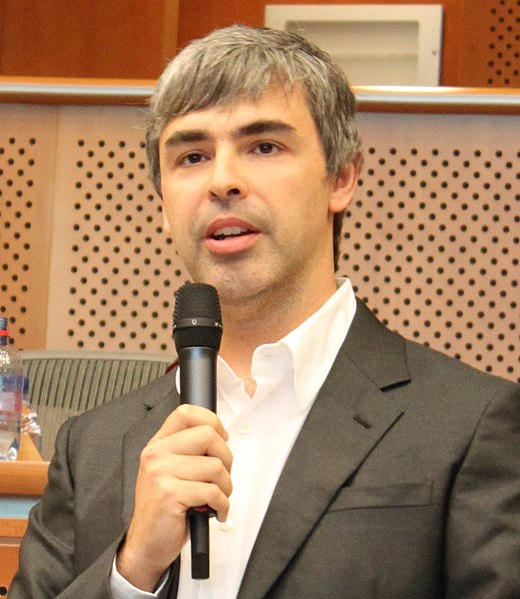The Art of Balancing Support and Challenge: How the Best Leaders Succeed
Finding the Sweet Spot: The Importance of Balancing Support and Challenge
Leadership is an art that requires a range of skills, including the ability to balance support and challenge for every individual under your supervision. Whether you are managing a team, leading a company, or governing a nation, the key to successful leadership lies in understanding the unique needs and aspirations of each person you are responsible for.
Support and challenge are two sides of the same coin in leadership. Support involves creating an environment that enables individuals to achieve their full potential and feel valued as part of a team. It requires leaders to provide the necessary resources, guidance, and encouragement to help their followers succeed. Challenge, on the other hand, is about pushing individuals out of their comfort zones, setting high expectations, and holding them accountable for their actions.
The best leaders in the world recognize the importance of calibrating support and challenge for everyone they lead. They understand that every individual is different and requires a tailored approach to motivate and inspire them. By mastering this skill, leaders can foster a culture of excellence and innovation, drive organizational success, and make a positive impact on their communities.
In this article, we will explore the concept of support and challenge in leadership, examine the benefits of calibrating these two elements for everyone, analyze examples of leaders who have successfully done so, and provide practical strategies for leaders to apply in their own leadership roles.
Leadership is not a one-size-fits-all approach, and by understanding how to balance support and challenge for every individual, you can create an environment where everyone thrives, grows, and achieves their full potential.
Understanding the Concept of Support and Challenge:
Support and challenge are two essential elements of effective leadership, but understanding what they mean and how they work is critical to their successful application.
Support is about creating an environment that enables individuals to achieve their full potential. This can involve providing resources such as training, tools, and guidance to help individuals develop their skills and abilities. It also means creating a positive and inclusive work culture that values diversity, collaboration, and open communication. When individuals feel supported, they are more likely to feel confident in their abilities and motivated to perform at their best.
Challenge, on the other hand, is about pushing individuals out of their comfort zones, setting high expectations, and holding them accountable for their actions. This can involve setting ambitious goals and providing constructive feedback that helps individuals learn and grow. When individuals are challenged, they are more likely to develop new skills, gain confidence in their abilities, and achieve their full potential.
Balancing support and challenge is critical to successful leadership. Leaders who focus too much on support may inadvertently create a culture of complacency, where individuals feel too comfortable and lack the drive to push themselves. Conversely, leaders who focus too much on challenge may create a culture of fear and intimidation, where individuals feel overwhelmed and unable to perform at their best.
To calibrate support and challenge effectively, leaders must understand the unique needs and aspirations of each individual they lead. This requires active listening, empathy, and an open-minded approach that recognizes the diversity of personalities, learning styles, and preferences within a team or organization.
By striking the right balance between support and challenge, leaders can create a culture of excellence, where individuals feel valued, motivated, and empowered to achieve their goals. This can drive innovation, improve performance, and foster a sense of belonging and loyalty that is critical to the long-term success of any organization.
Examples of Leaders Who Calibrate Support and Challenge:
To better understand how to calibrate support and challenge for everyone, it can be useful to examine the leadership styles of successful leaders who have mastered this skill. Here are a few examples of leaders who have effectively balanced support and challenge for their followers:
Nelson Mandela:
Nelson Mandela, the former president of South Africa, is widely regarded as one of the greatest leaders of the 20th century. He spent 27 years in prison for his political activism before being released and elected as the country’s first black president. Mandela was known for his ability to balance support and challenge in his leadership style. He showed compassion and empathy towards his followers while also setting high expectations and holding them accountable for their actions. This approach helped him to build a diverse coalition of supporters, break down racial barriers, and usher in a new era of democracy and equality in South Africa.
Jack Ma:
Jack Ma, the founder of Alibaba, is another leader who has effectively balanced support and challenge for his followers. Ma is known for his motivational speeches and his emphasis on empowering his employees. He encourages his team to take risks, experiment with new ideas, and learn from failure. At the same time, he sets high expectations and challenges his team to perform at their best. This approach has helped Alibaba become one of the world’s largest e-commerce companies, with over 1 billion active users.
Indra Nooyi:
Indra Nooyi, the former CEO of PepsiCo, is another leader who has successfully calibrated support and challenge for her followers. Nooyi was known for her collaborative leadership style and her focus on developing her employees’ skills and talents. She encouraged her team to take on new challenges and supported them in their efforts to learn and grow. At the same time, she held her team accountable for achieving their goals and driving business results. Under Nooyi’s leadership, PepsiCo became a more diverse and inclusive organization, with a strong focus on sustainability and social responsibility.
Elon Musk:
Elon Musk, the founder of Tesla and SpaceX, is known for his visionary leadership style and his ability to inspire his followers. Musk challenges his team to think big and take on audacious goals, such as colonizing Mars and revolutionizing the transportation industry. He supports his team with the necessary resources and guidance to achieve these goals, while also holding them accountable for their progress. This approach has helped Musk build a loyal following of employees and customers who share his vision for a better future.
Angela Merkel:
Angela Merkel, the former chancellor of Germany, is another leader who has effectively balanced support and challenge for her followers. Merkel is known for her calm and measured leadership style, which emphasizes collaboration and consensus-building. She supports her team by listening to their concerns and ideas and incorporating them into her decision-making process. At the same time, she challenges her team to think critically and take a long-term perspective on issues such as climate change and immigration. This approach has helped Merkel build a reputation as a strong and effective leader, both domestically and internationally.
These examples demonstrate that calibrating support and challenge for everyone is an essential component of effective leadership. By understanding the unique needs and aspirations of each individual, leaders can create a culture of excellence and innovation that drives organizational success and makes a positive impact on their communities.
Benefits of Calibrating Support and Challenge for Everyone:
Calibrating support and challenge for everyone can provide a range of benefits to individuals, teams, and organizations. Here are some of the key benefits:
Increased Motivation and Productivity:
When individuals feel supported and challenged in their work, they are more likely to feel motivated and engaged. They are more likely to take initiative, seek out new opportunities, and innovate. This, in turn, can lead to increased productivity, higher quality work, and greater job satisfaction.
Improved Communication and Collaboration:
When leaders calibrate support and challenge effectively, it can lead to better communication and collaboration among team members. When individuals feel supported, they are more likely to feel comfortable sharing their ideas and perspectives. When they are challenged, they are more likely to work together to find solutions to problems. This can lead to better decision-making, stronger relationships, and a more cohesive team.
Enhanced Trust and Respect:
Calibrating support and challenge can also help to build trust and respect between leaders and their followers. When leaders provide the necessary support and guidance, it shows that they value their employees and want them to succeed. When they challenge their employees to perform at their best, it shows that they have confidence in their abilities and expect high standards. This can lead to greater trust and respect between leaders and their followers, which is critical for long-term success.
Stronger Relationships and Loyalty:
When leaders calibrate support and challenge for everyone, it can lead to stronger relationships and greater loyalty among employees. When individuals feel supported and challenged, they are more likely to feel invested in their work and committed to the organization’s goals. They are also more likely to stay with the organization for the long-term, which can help to reduce turnover and increase stability.
Overall, calibrating support and challenge for everyone can provide a range of benefits to individuals, teams, and organizations. It can help to create a culture of excellence and innovation, drive performance and productivity, and build stronger relationships and loyalty. By mastering this skill, leaders can create a workplace that is not only successful but also fulfilling and rewarding for everyone involved.
Challenges in Calibrating Support and Challenge for Everyone:
While calibrating support and challenge for everyone can provide a range of benefits to individuals, teams, and organizations, it is not without its challenges. Here are some of the key challenges that leaders may face when trying to balance support and challenge effectively:
Resistance to Change:
Some individuals may resist being challenged or pushed out of their comfort zones. They may prefer to stay in familiar territory rather than taking on new challenges. This can make it difficult for leaders to calibrate challenge effectively, as they may need to find ways to motivate and encourage individuals who are resistant to change.
Different Personalities and Learning Styles:
Individuals have different personalities, learning styles, and preferences. What works for one person may not work for another. Leaders need to be aware of these differences and adjust their approach accordingly. For example, some individuals may prefer a more hands-on approach, while others may prefer a more autonomous approach.
Time Constraints:
Calibrating support and challenge for everyone can be time-consuming. Leaders may need to spend time getting to know each individual’s strengths, weaknesses, and aspirations. They may also need to provide ongoing feedback and support to help individuals achieve their goals. This can be challenging, particularly in fast-paced work environments where time is limited.
Balancing Competing Priorities:
Leaders may have competing priorities, such as meeting business objectives, managing budgets, and ensuring compliance with regulations. This can make it difficult to prioritize the needs and aspirations of individual team members. Leaders need to be able to balance these priorities while still providing the necessary support and challenge to help their team members succeed.
To overcome these challenges, leaders can adopt a range of strategies, including active listening and feedback, personalization and customization, empathy and understanding, and recognition and reward.
Active Listening and Feedback:
Leaders can improve their ability to calibrate support and challenge by actively listening to their team members and providing ongoing feedback. This can help to build trust and strengthen relationships, which can in turn make it easier to motivate and challenge individuals.
Personalization and Customization:
Leaders can also tailor their approach to meet the unique needs and aspirations of each individual. This can involve providing customized training and development opportunities, setting personalized goals, and providing ongoing support and guidance that takes into account each individual’s strengths and weaknesses.
Empathy and Understanding:
Leaders can also benefit from developing empathy and understanding towards their team members. This involves putting themselves in their team members’ shoes, understanding their perspectives, and being sensitive to their needs and concerns. This can help to build stronger relationships and increase motivation and engagement.
Recognition and Reward:
Finally, leaders can use recognition and reward to motivate and challenge their team members. This can involve acknowledging individuals’ achievements, providing incentives for reaching goals, and creating a culture of recognition and celebration.
Calibrating support and challenge for everyone is not without its challenges, but by adopting these strategies, leaders can create a workplace that is both successful and fulfilling for everyone involved.
Strategies for Calibrating Support and Challenge for Everyone:
To calibrate support and challenge effectively, leaders need to adopt a range of strategies that take into account the unique needs and aspirations of each individual. Here are some practical strategies that leaders can apply in their own leadership roles:
Active Listening and Feedback:
Active listening involves being fully present and engaged when communicating with team members. It means taking the time to understand their perspectives, concerns, and aspirations. Leaders can use feedback to provide constructive criticism and praise, and to set clear expectations for performance. By actively listening and providing feedback, leaders can build stronger relationships and create a culture of openness and trust.
Personalization and Customization:
Personalization and customization involve tailoring the leadership approach to meet the unique needs and aspirations of each individual. This can involve providing customized training and development opportunities, setting personalized goals, and providing ongoing support and guidance that takes into account each individual’s strengths and weaknesses. Leaders can use tools like personality assessments, coaching, and mentoring to understand their team members’ preferences and create a personalized development plan.
Empathy and Understanding:
Empathy and understanding involve putting oneself in the shoes of others and understanding their perspectives, needs, and concerns. Leaders can benefit from developing empathy and understanding by listening actively, seeking to understand different perspectives, and being sensitive to the needs and aspirations of each individual. This can help to build stronger relationships, increase motivation and engagement, and create a culture of respect and inclusivity.
Recognition and Reward:
Recognition and reward involve acknowledging and celebrating individuals’ achievements. Leaders can use recognition and reward to motivate and challenge their team members, create a sense of accomplishment, and foster a culture of excellence. This can involve providing incentives for reaching goals, acknowledging individuals’ contributions publicly, and creating a culture of appreciation.
By adopting these strategies, leaders can create a workplace that is supportive, challenging, and fulfilling for everyone involved. It can help to create a culture of excellence and innovation, drive performance and productivity, and build stronger relationships and loyalty.
It is important to note that calibrating support and challenge for everyone is an ongoing process that requires consistent effort and attention. Leaders need to be open-minded, adaptable, and willing to learn from their mistakes. By continuously striving to improve their leadership skills and adapt to the unique needs and aspirations of each individual, leaders can create a workplace that is both successful and fulfilling.
Creating a Culture of Excellence: Calibrating Support and Challenge for Everyone
The best leaders in the world learn to calibrate support and challenge for everyone they lead. Balancing support and challenge is critical to successful leadership, as it helps to create an environment that enables individuals to achieve their full potential and feel valued as part of a team. It requires leaders to provide the necessary resources, guidance, and encouragement to help their followers succeed, while also pushing them out of their comfort zones, setting high expectations, and holding them accountable for their actions.
Leaders who calibrate support and challenge effectively can create a culture of excellence and innovation, drive organizational success, and make a positive impact on their communities. They can increase motivation and productivity, improve communication and collaboration, enhance trust and respect, and build stronger relationships and loyalty.
However, calibrating support and challenge for everyone is not without its challenges. Leaders may face resistance to change, different personalities and learning styles, time constraints, and competing priorities. To overcome these challenges, leaders can adopt strategies such as active listening and feedback, personalization and customization, empathy and understanding, and recognition and reward.
In today’s rapidly changing world, effective leadership is more important than ever. By mastering the skill of calibrating support and challenge for everyone, leaders can create a workplace that is not only successful but also fulfilling and rewarding for everyone involved.






